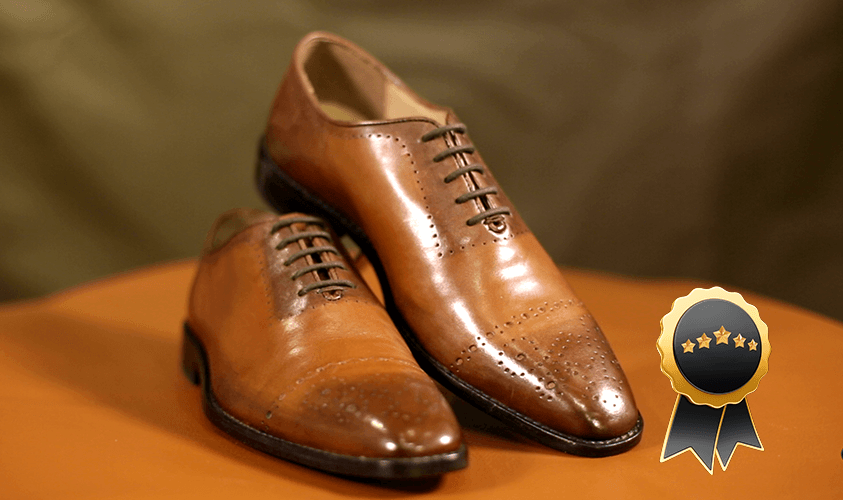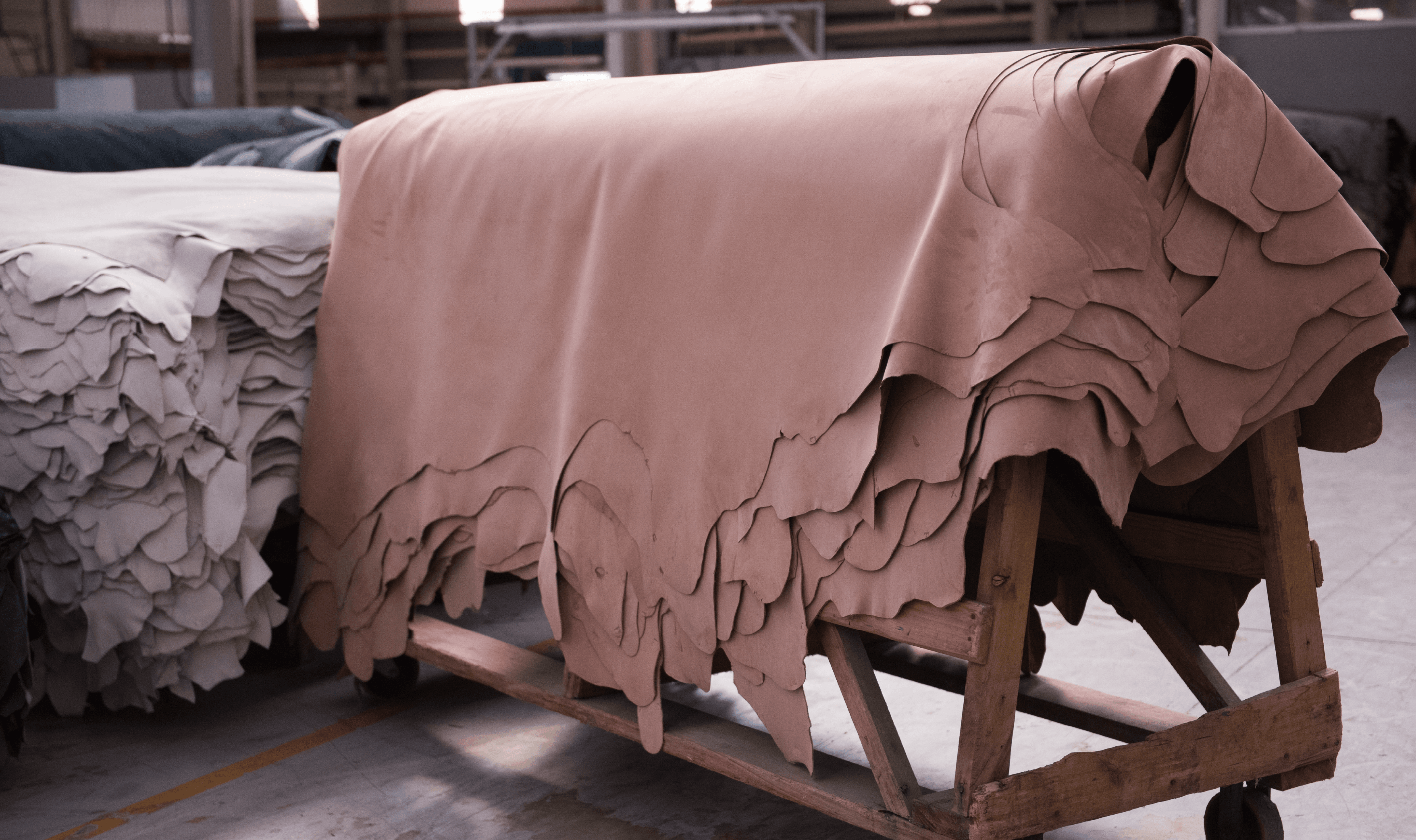Selecting a quality leather supplier is essential to ensuring the excellence of manufacturers' end products. Therefore, having a reliable partner not only reinforces the quality of the raw material, but also guarantees aspects such as traceability, sustainability and compliance with international standards.
It is therefore crucial to carefully analyze factors such as the quality of the wet blue and crust leather, the technologies used in the production processes, the delivery capacity and the traceability of the raw material, in order to obtain an efficient and responsible supply.
In this article, we'll highlight the main criteria for choosing the best leather supplier for your business. In addition, we'll examine how this choice influences the quality of the final products and look at the technologies and certifications that ensure a reliable supply.
With this information, you'll be able to make strategic decisions that are in line with the best practices in the sector. So read on!
Quality of Wet Blue Leather and Semi-Finished Leather
Wet blue and semi-finished leather represent essential stages in the production of the final article, directly influencing its characteristics.
The quality of wet blue depends on factors such as selecting the right raw material, precise control of weights, consistency of chemical formulations and physical processes, uniformity of thickness, humidity control and precision in metering.
Semi-finished leather, on the other hand, requires precision in thickness, grain breakage, softness and color fixation and tone, as well as precision in metering to ensure a homogeneous and durable finish.
Without strict control of these stages, the transformation of the leather into a finished product can be flawed, generating waste and increasing production costs.
Another critical point is the sustainability of the processes involved. The production of wet blue and semi-finished leather must minimize environmental impact by reducing the use of harmful chemicals and optimizing the reuse of waste.
Therefore, suppliers committed to good environmental practices need to invest in innovative technologies to make production cleaner, more efficient and more responsible.

Technology and Advanced Processes
Technological progress has a significant impact on the quality and responsible origin of leather.
Modern production processes reduce water and energy consumption, improve efficiency and ensure end products with superior performance. We'll show you some of these procedures below:
Efficient and Sustainable Use of Resources
Durli Leathers has reduced its water consumption by 80% per pelt produced, with 45% through modern processes and 35% through reuse. Main measures adopted:
-
- 30%: Replacement of salted leather with fresh;
-
- 20%: Closed reuse and recycling systems;
-
- 15%: Multi-action soaps and consumption control;
-
- 10%: Reuse of water from dryers and cooling;
-
- 5%: Reuse of water from the chrome bath.
In energy consumption, there has been a 25% increase in efficiency and a 30% reduction in effluent treatment, with measures such as:
-
- Use of LED lamps;
-
- Transparent tiles for more natural light.
Reducing Gas Emissions
The company monitors and reduces greenhouse gas emissions with:
-
- Conveyor belts for lower diesel consumption;
-
- Optimized logistics for waste transport.
Waste and Effluent Management
All waste and effluents are treated properly:
-
- 100% of waste is disposed of correctly;
-
- 95% of the effluents containing chromium are reused in the processes;
-
- 5% is sent to licensed landfills.
The company also invests in fertigation, transforming waste into nutrients for the soil.
With these initiatives, Durli Couros reaffirms its commitment to sustainable leather production.
Finally, you can read more about our ESG initiatives at: Durli Leathers and Environmental ESG.
Delivery Capacity and Availability of Large Volumes
Large-scale supply capacity and logistical predictability are key to ensuring that the production chain operates without interruption. This is why the market demands suppliers who can meet variable demands without compromising deadlines and quality standards.
-
- Production stability: a robust production structure ensures that the supply of leather remains constant, even in the face of market fluctuations.
-
- Intelligent Stock Management: continuous monitoring of production and distribution levels, reduces the risk of shortages and optimizes the availability of raw materials.
- Efficient logistics: a good supplier must have agile and efficient logistics processes that allow deliveries to be made on time and at controlled costs.

Raw Material Traceability and Sustainability
Environmental responsibility is one of the main issues debated in production chains, and the leather industry is no exception. In Brazil, this issue has gained prominence and is being widely discussed by leaders from various sectors.
According to José Fernando Bello, executive president of the Centre for the Brazilian Tanning Industry (CICB), the country's leather sector is reaffirming its commitment to implementing new technologies and sustainable processes to meet growing customer demands and international regulations.
In addition, Bello emphasizes the importance of life cycle assessment, which is gaining momentum among leather customers, impacting the production chain and the demands made on material suppliers.
Therefore, the traceability and sustainability of leather have become essential competitive differentiators.
International regulations and the growing concern for responsible practices mean that the origin of the raw material and the environmental impact of production are determining factors when choosing a good supplier.
This focus on traceability and sustainability is reflected in three key points:
-
- Production chain monitoring: advanced tracking systems ensure that raw materials come from sustainable sources and are free from deforestation.
-
- Environmental certifications: seals such as the Leather Working Group (LWG) attest to the leather industry's commitment to good environmental and social practices.
-
- Transparency and Compliance: suppliers who provide detailed information on the origin of the leather demonstrate responsibility and alignment with the demands of the global market.
International Standards and Sustainability
Large industries require their suppliers to follow strict standards to ensure compliance with environmental and social regulations.
-
- ISO standards: certifications such as ISO 9001 ensure that production processes follow globally recognized quality standards.
-
- ESG (Environmental, Social and Governance) criteria: companies that adopt good governance practices and social and environmental responsibility strengthen their reputation and access more demanding markets.
-
- Commitment to the Circular Economy: reducing waste and reusing materials are practices that are increasingly valued by the global market.

Why Choose Durli Leathers as a Supplier?
Durli Leathers supplies bovine hides that meet strict quality and stability standards, with certified footage, even in large volumes. As well as ensuring consistent quality in subsequent processes, this helps to reduce costs, increase cutting yields and add value to the end product.
Quality of Wet Blue and Semi-Finished
Durli Leathers ' Wet Blue is produced using an advanced chrome-based tanning process, which guarantees high durability and resistance to the raw material, keeping its qualities intact during subsequent production stages.
Each batch of Wet Blue undergoes strict quality control, which ensures uniformity in its appearance and properties, meeting the specific requirements of different industries.
Semi-finished leather stands out for its consistency, appropriate texture, resistance and flexibility, making it an ideal option for customized finishing processes such as pigmentation, embossing and the application of special finishes.
After tanning, the leather is subjected to treatments that increase its resistance to abrasion, flexibility and durability, characteristics that make it suitable for manufacturing high-performance products.
Semi-finished leather serves as an excellent base for customized finishes, as it has a homogeneous surface and is prepared to meet the aesthetic and functional requirements of each client.
State-of-the-art technology
With multi-action drums, high-efficiency dryers such as vacuum pre-dryers, stationary LTD dryers, radiofrequency dryers and TAIC dryers through controlled heating and irradiation, Durli Leathers optimizes its production processes to offer homogeneous leather, with less environmental impact and greater use in cutting.
Delivery Capacity and Large Volumes
With manufacturing units structured at strategic points and efficient processes, the company maintains stable production and is able to meet large volumes without compromising deadlines and quality.
In this regard, Durli Leathers has 10 industrial units, distributed between 8 in Brazil, 1 in Paraguay and 1 in Mexico. In addition, all units are LWG certified, which guarantees high standards of quality and sustainability.
With a production of more than 27,000 skins a day, the company exports to the main markets in Asia, Europe and the United States.
Leather Traceability
Through geomonitoring and individual certification, Durli Leathers ensures that all raw materials are ethically and responsibly sourced, meeting the highest standards of the international market.
Since 2010, it has used satellite geomonitoring to check compliance with socio-environmental criteria by suppliers and indirect farms on a daily basis.
In addition, the company follows a Responsible Purchasing Policy, acquiring raw materials only from suppliers who respect environmental and labor standards, avoiding origins in areas of deforestation, invasion of indigenous lands and exploitation of child or forced labor.

Its tracking process covers five stages: individual identification of the animal from the indirect farm, socio-environmental compliance of the slaughterhouses, laser marking of the leather, digital data management and total transparency for the end customer, who can check the origin of the leather purchased.
International Standards and Certifications
The company is certified by recognized organizations with LWG Gold and ISO 9001 seals and follows compliance standards and environmental and social regulations.
Final Thoughts on the Best Leather Supplier
In short, the choice of a leather supplier must be based on solid criteria, such as the quality of the raw material, the technology used, logistical capacity and commitment to sustainability.
Therefore, companies that invest in innovation, traceability and compliance with international standards, such as Durli Leathers, guarantee a reliable and high standard of supply.
If you are looking for a strategic partner to guarantee excellent leather, contact our experts and see how we can meet the special needs of your business.
References:

